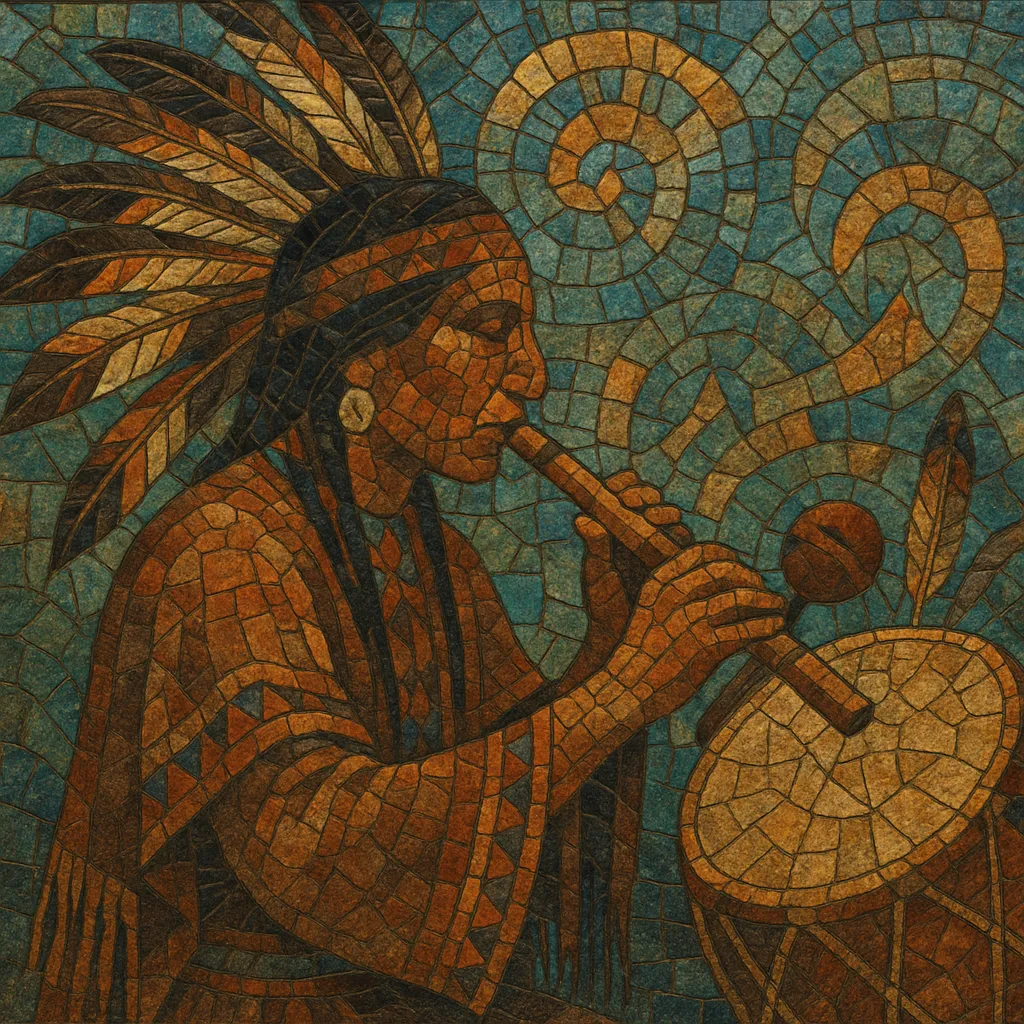
Native American music encompasses the diverse vocal and instrumental traditions of the Indigenous peoples of North America. It is primarily voice-centered, with communal singing supported by large powwow drums, hand/frame drums, water drums, rattles, and the Native American flute.
Melodies often use pentatonic or anhemitonic scales and feature terraced (descending) contour, vocables (non-lexical syllables) alongside texts in Indigenous languages, and cyclic repetition in sets of 4 (reflecting cultural symbolism). Music serves ceremonial, social, healing, and storytelling functions, and is inseparable from dance and regalia.
While distinct regional styles exist (Plains powwow, Southwestern Pueblo/Navajo, Great Basin, Northwest Coast polyphony, Inuit throat singing, Southeastern stomp dance traditions), all emphasize community participation, spiritual intention, and strong rhythmic grounding. Contemporary scenes range from traditional powwow and peyote songs to modern fusions that respect traditional aesthetics while engaging new forms.
Indigenous musical systems in North America long predate European contact and were integral to ceremonial life, healing practices, seasonal cycles, diplomacy, and oral history. Core features—communal singing led by a song leader, cyclic form, terraced-descending melodies, vocables, and drum-centered rhythm—were already well established across many nations.
Colonial suppression, boarding schools, and missionization threatened transmission of songs and languages. Yet musical traditions persisted in ceremonial contexts, adapted hymn forms into Indigenous languages, and retained core aesthetics. Ethnomusicologists like Frances Densmore recorded thousands of songs in the early 1900s, preserving many examples despite the asymmetries of that era.
Post–World War II powwow circuits expanded intertribal exchange; peyote songs spread with the Native American Church. The Native American flute was revitalized and entered broader public consciousness through recordings and concert presentations. Artists like Buffy Sainte-Marie and Jim Pepper brought Indigenous melodies and thematics into folk, rock, and jazz.
Today, traditional powwow and ceremonial music thrive alongside contemporary forms. Recordings by groups such as Northern Cree and Black Lodge Singers circulate widely. The Native flute found global audiences (e.g., R. Carlos Nakai). New hybrids (e.g., powwow-influenced electronic music) coexist with careful community stewardship and protocols around sacred/owned songs. Festivals, awards, and Indigenous-run labels continue to support both preservation and innovation.

